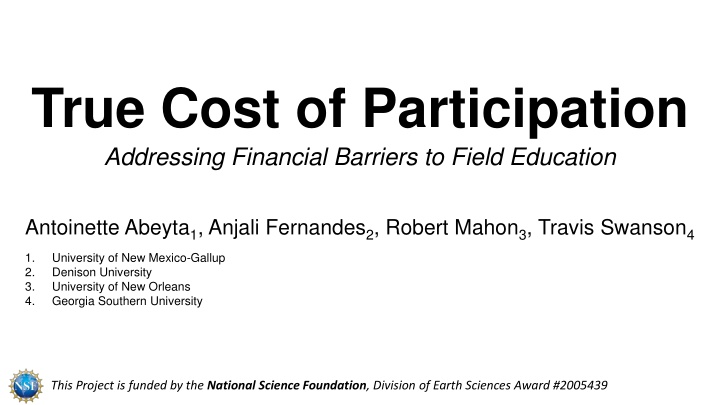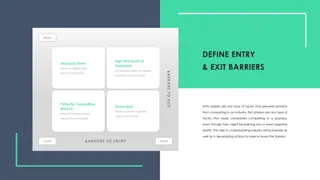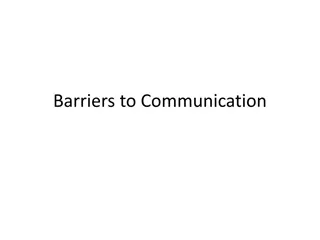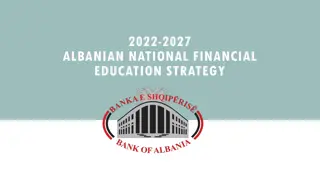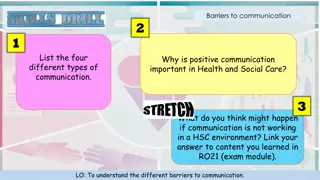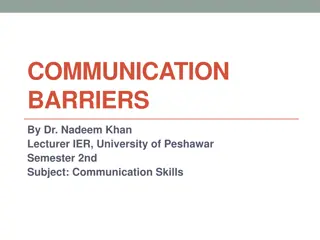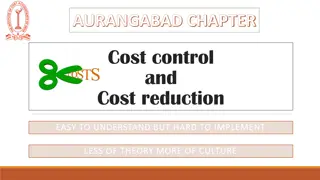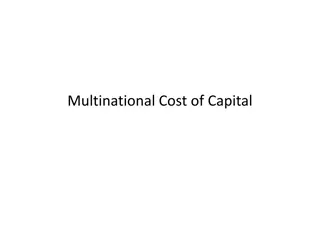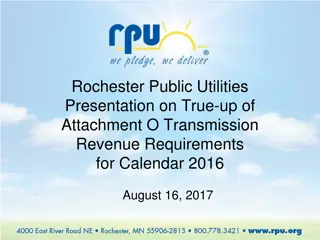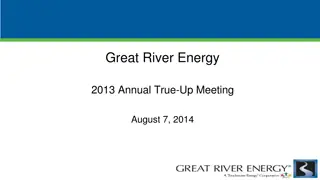Addressing Financial Barriers to Field Education: True Cost of Participation
Exploring the financial barriers hindering participation in field education, this project delves into the costs associated with field work trips and the impact on student involvement. Lack of adequate gear, safety hazards, and quality of trips are highlighted as potential barriers. The study aims to quantify the cost of participation by analyzing critical gear, travel expenses, and associated costs for a typical 5-day out-of-state field trip. By identifying cost factors and summarizing data, the project seeks to determine the incurred costs and loss of wages needed for participation.
Uploaded on Sep 12, 2024 | 2 Views
Download Presentation

Please find below an Image/Link to download the presentation.
The content on the website is provided AS IS for your information and personal use only. It may not be sold, licensed, or shared on other websites without obtaining consent from the author.If you encounter any issues during the download, it is possible that the publisher has removed the file from their server.
You are allowed to download the files provided on this website for personal or commercial use, subject to the condition that they are used lawfully. All files are the property of their respective owners.
The content on the website is provided AS IS for your information and personal use only. It may not be sold, licensed, or shared on other websites without obtaining consent from the author.
E N D
Presentation Transcript
True Cost of Participation Addressing Financial Barriers to Field Education Antoinette Abeyta1, Anjali Fernandes2, Robert Mahon3, Travis Swanson4 1. 2. 3. 4. University of New Mexico-Gallup Denison University University of New Orleans Georgia Southern University This Project is funded by the National Science Foundation, Division of Earth Sciences Award #2005439
Field education is defined as any educational component outside the classroom, typically in a natural setting Critical for the development of essential skills Thrill of discovery Traditional component to geoscience education Membership to the geoscience community 30-60 days in the field for UG degree
Limited work has been done to examine the cost of field work Cost of field work/trips mitigated by student tuition/fees (Boyle et al., 2007) Brief mention that cost of field camp could present as a barrier (AGI, 2016) One study analyzed the cost of field activity Mainly addressed cost of equipment and sampling Important assumption: individuals had their own gear to do field work and was not incorporated into the cost analysis (Mallory et al., 2018)
Does the cost of field education present a barrier to participation? Requires significant investment Lack of adequate gear reduces minority participation to outdoor activities (Schwartz & Corkery, 2011) Inadequate gear poses safety hazards (Alpay and Paulen, 2014) Impacts quality of the trip Potential barrier and determent to persistence in geoscience Low SPF sunscreen No rain gear School backpack All cotton based clothes Improper footwear
Can we quantify the cost of participation? Identified the critical gear, travel, and associated costs needed to complete field activity 5 day, out of state field trip Determined costs using commonly used websites and vendors to obtain goods/services Compiled the top 40 results, sorted by relevance Summarized data to collected to determine the 25/50/75 percentile Bracket the lower and upper limit of cost of participation Calculate incurred costs needed to participate loss of wages, dependent care
Initial Cost of Investment Percentile Cost 25 $243 50 $389 75 $626
Price difference based on gendered searches Women on average will pay 43-75 USD more than their male counterparts Reduced number of items available contribute to cost difference Does not look at the intersection of specialized sizes (e.g., plus, tall, petite) n = 168 n = 236 n = 54 n = 174
Cost of field gear Minimum Value assumes individual has one pair of pants and socks Women s and men s gear summary is calculated with 2 pair of pants, 3 pairs of socks Assumed to be the minimum ideal amount for a 5 day trip
External costs related to field trips Travel related expenses Flights and lodging Loss of wages based off of 8 hour work day USA minimum wages potentially much higher Dependent care Based off average annual spent on childcare in USA 2018, averaged out to dollar per day. Assumes 1 dependent
Summary of cost of participation The total investment from students ranges from 1200 1800 dollars
If field work remains a critical component of geoscience education, we need to address cost as a barrier to participation Analyze who participates on field trip activities Reduce costs Provide field gear assistance Stipend to purchase gear Boots, fast dry pants most purchased Field gear libraries Compensate students for their labor in the field
Removing cost as a barrier to participation improves diversity #BonnetCarre2019 NSF Funded Program Paid for student labor Provided field stipend Provided general gear Paid travel/lodging 54% female Double the rate of representation 34% from historically underrepresented racial and ethnic groups (Black, Native American, Latinx) Four times the rate of representation
Acknowledgements This field work was done on the homelands of the Isle de Jean Charles Band of Biloxi-Chitimacha- Choctaw Indians of Louisiana; the Pointe-au-Chien Indian Tribe; the Grand Caillou and Dulac Band of the Biloxi-Chitimacha Choctaw Tribe; and the Atakapa-Ishak Chawasha Tribe of the Grand Bayou Indian Village. These tribes have lost upwards of 98% of its land since the 1950s. This Project is funded by the National Science Foundation, Division of Earth Sciences Award #2005439 Special thank you to: Denison University: David Greene, Sawyer Hilt, Bennett Van Horn, Eva Jorn, Ariel Russell, Laura Lapham, Elliot Hayne, Ethan Leuchter, Rachel Mierzejewski University of New Mexico Gallup: Martina Smiley, Keira Redhouse, Elliot Redhouse, Douglas Benally Jr., Bobbi Padilla, Astrid Gonzaga, Philip Rodgers, Tyson Bond Georgia Southern University: Caroline Mlaska, Katherine Lawrence, Meredith Duncan University of New Orleans: Wayne Wagner, Madeline Cross, Miles Beech The Water Institute of the Gulf: Diana De Leonardo, Chris Esposito, Ioannis Georgiou Tulane: Nicole Gasparini, Torbj rn T rnqvist
